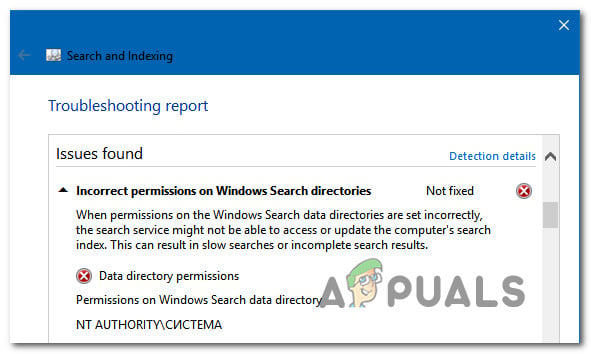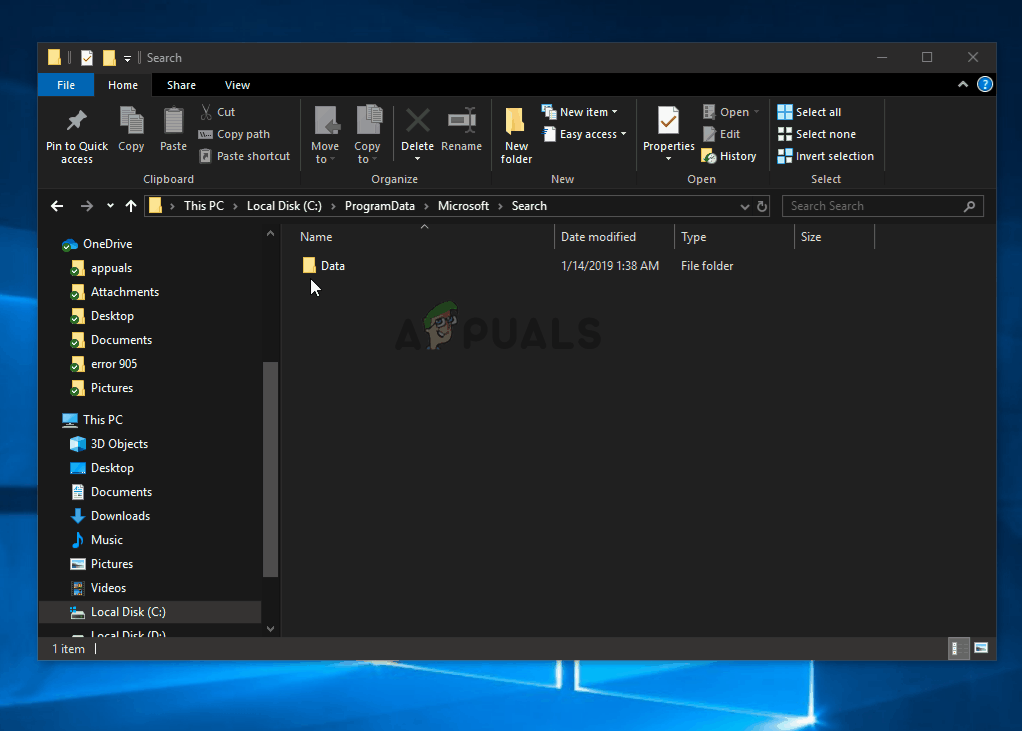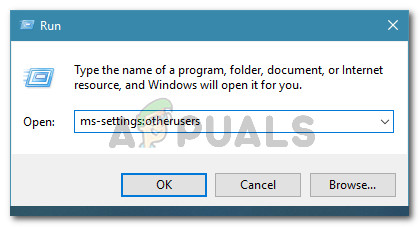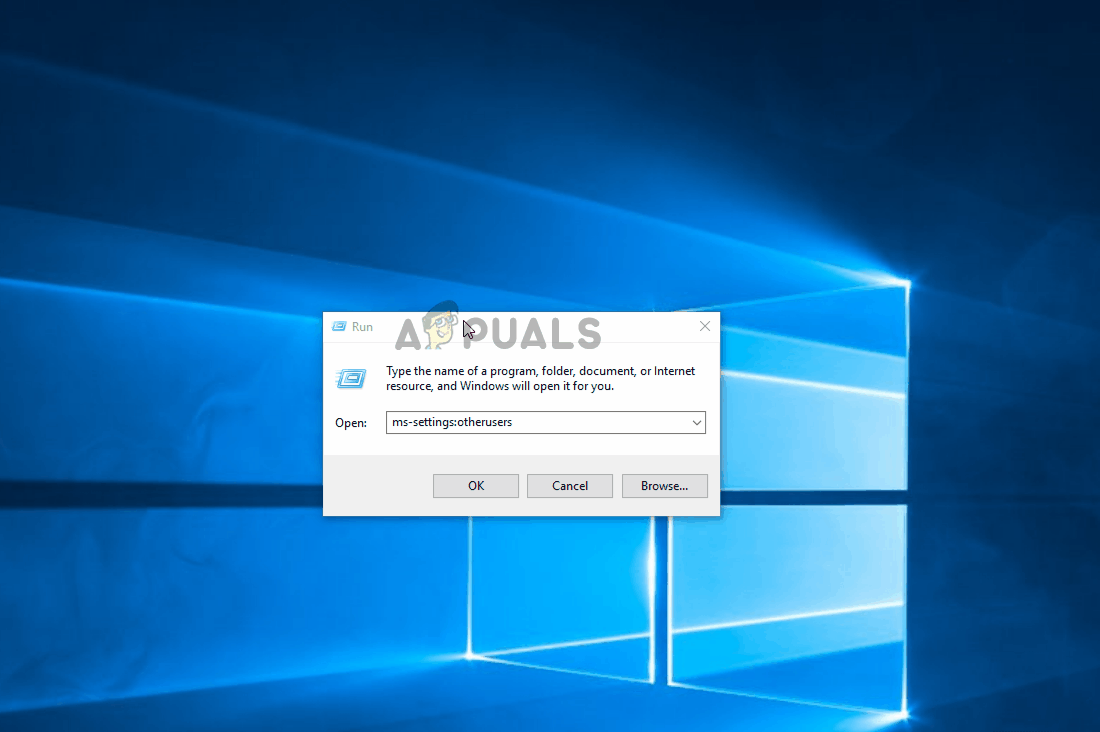‘Incorrect permissions on Windows Search directories’ [5 Solutions]
Several WIndows users have been reaching us with questions after running the Search and Indexing troubleshooter and discovering that there’s an issue with Windows Search permissions. The issue that gets found is “Incorrect permissions on Windows Seach directories“. Most users have decided to runt his troubleshooter after noticing some inconsistencies with how Windows Search returns results. The issue is not exclusive to a certain Windows version since it’s confirmed to occur on Windows 7, Windows 8.1 and Windows 10.

What is causing the ‘Incorrect permissions on Windows Search directories’ error?
We investigated this particular issue by looking at various user reports and the repair strategies that are most commonly used to resolve this problem. As it turns out, several different scenarios might end up facilitating the apparition of this issue. Here’s a list of potential culprits:
- The data folder is not owned by the active account – In most cases where this problem is occurring, it’s because the folder used during the search query (Data) is not owned by the account that is currently active. Several users that were also encountering the issue have managed to fix it by taking ownership of the Data folder.
- System file corruption – System file corruption can also be responsible for the apparition of this issue. If this scenario is applicable, you should be able to restore the normal functionality of your search function by fixing corruption with utilities like SFC and DISM. In more severe cases, you’ll need to go for a repair install to get rid of the corrupted files.
- Corrupted user profile – Another reason why you might encounter this problem is due to a corrupted user profile. In this case, you should be able to resolve any corruption conflicts that are causing the issue by creating a new user profile and using that one instead of the current one.
- Glitched Cortana module – Based on various user reports, you might also encounter this error in instances where the search function is affected by Cortana or one of its dependencies. In this case, you should be able to resolve the issue by resetting Cortana and all associated components to its factory state.
Method 1: Taking ownership of the Data folder
A large portion of affected users has managed to resolve the issue by taking complete ownership of the following path: C:/Program Data/ Microsoft/Search/Data. Affected users have reported that after doing so and restarting their computer, the Seach and Indexing troubleshooter was no longer encountering this particular issue.
Here’s a quick guide on taking complete ownership on C:/Program Data/ Microsoft/Search/Data:
Note: You should be able to follow the instructions below on all recent Windows versions (Windows 7, Windows 8.1 and Windows 10).
- Open File Explorer and navigate to the following location:
C:\ProgramData\Microsoft\Search
- Once you get there, right-click on the Data folder and choose Properties from the newly appeared context menu.
- Inside the Properties menu, use the horizontal bar at the top to access the Security tab, then click on Advanced to access the Advanced Security Settings for Data.
- Once you’re inside the Advanced Security Settings for data, click on the Change hyperlink associated with Owner.
- Now that you’re inside the Select User or Group window, start by typing your username inside the text box. Once you’ve done that, click on Check names to ensure that the name you entered is correct.
Note: If the name is correct, you should see your full name and email address added to the text box automatically. If the username is not correct, you’ll see an error message. - When you get returned to the Advanced Security Settings for Data, select your username from the list of Permission entries and click the Edit button below.
- Next, you should be taken inside the Permission Entry for Data window. From there, go to Basic permissions categories and ensure that the box associated with Full control is checked. Then click Ok to save the changes.
- Once you’re back to the Advanced Security Settings for Data, click on Apply to save the changes, then restart your computer.
- After the next startup is complete, run the Search and Indexing troubleshooter again and see if the issue is still occurring.

If you still see the “Incorrect permissions on Windows Seach directories” error, move down to the next method below.
Method 2: Running SFC and DISM scans
If the method above didn’t allow you to resolve the issue, chances are the issue is being caused by some corrupted system files. As several affected users have reported, you should be able to resolve this particular issue by using a couple of built-in utilities capable of fixing system file corruption. Both DISM (Deployment Image Servicing and Management) and SFC (System File Checker) are perfectly capable of resolving cases of system file corruption, but they work around the issue differently.
While DISM uses Windows Update to replace corrupted files with healthy copies, SFC relies on a local cache archive to fetch healthy copies when it needs to. But since both inconsistencies are known to have some blank spots when it comes to identifying corrupted files, we highly recommend that you run both utilities in the same order.
Here’s a quick guide on performing DISM & SFC scans:
- Open up a Run dialog box by pressing Windows key + R. Inside the Run window, type “cmd” inside the text box and press Ctrl + Shift + Enter to open up an elevated Command Prompt. If you’re prompted by the UAC (User Account Control), click Yes to grant administrative privileges to the CMD window.

Running Command Prompt - Once you’re inside the elevated Command Prompt, type the following command and press Enter to start an SFC scan:
sfc /scannow
Note: Once you start this process, do not close the CMD window or shut down your machine under any circumstances. Doing this might expose your system to further system corruption. And keep in mind that even if the final report doesn’t contain any fixed corruption files, that doesn’t mean that nothing was repaired. SFC is notoriously known for failing to report corrupted instances that have been resolved.
- Once the scan is finished, restart your computer and see if the issue has been resolved.
- Regardless if you’re still encountering the same symptoms or not, follow step 1 again to open up another elevated Command Prompt. Next, type the following command again to initiate a DISM scan:
DISM /Online /Cleanup-Image /RestoreHealth
Note: Since DISM uses WU, it needs a reliable internet connection to download healthy copies of the files that are determined to be corrupted. Because of this, you need to make sure that your internet connection is stable before starting this procedure.
- Once the DISM scan is complete, restart your computer once again and see if the “Incorrect permissions on Windows Seach directories” error is resolved at the next system startup.
If you’re still encountering the same problem, move down to the next method below.
Method 3: Creating a New User Profile
Some affected users have reported that they manage to fix the issue by creating a new Windows user profile and deleting the older one. For most users, this trick has allowed them to restore the search function completely. Upon running the Search & indexing troubleshooter, the”Incorrect permissions on Windows Seach directories” issue was no longer reported.
Here’s a quick guide on creating a new user profile on Windows 10:
- Press Windows key + R to open up a Run dialog box. Next, type “ms-settings:other users” inside the text box and press Enter to open up the Family & other people tab of the Settings app.

Running dialog: ms-settings:otherusers - After you manage to get inside the Family & other users tab, move down to the right-hand pane and go to the Other users tab. Once you’re there, click on Add someone else to this PC.
- Next, proceed by adding your email and phone associated with your Microsoft account. If you want to establish a local account, click on “I don’t have this person’s sign-in information‘
- Once you get to the next screen, type the credentials of your Microsoft account or click on Add a user without a Microsoft account (if you want to create a local account).
Note: Know that if you create a local account, some online features present on Windows 10 will not be available. - Establish a User name and a password for your new account. Next, you’ll be prompted to assign a security question. We encourage you to do it to secure your account and set up a password recovery method.
- When the new account has been created, restart your computer and log in with the newly created account at the next startup.
- Once the startup sequence is complete, see if the search function is working normally now. If it is, you can safely delete the old user profile since you won’t use it anymore.

If you’re still having issues with your Windows search function, move down to the next method below.
Method 4: Reset Cortana via PowerShell
As it turns out, this particular issue can also occur in instances where files or dependencies of Cortana are corrupted and are preventing the search queries from completing successfully. Several users that we’re also struggling to resolve the same issue have reported that they were finally able to resolve it by resetting Cortana via an elevated PowerShell window.
Here’s a quick guide on doing this:
- Press Windows key + R to open up a Run dialog box. Next, type “powershell” inside the text box and press Ctrl + Shift + Enter to open up an elevated Powershell prompt. At the UAC (User Account Control) prompt, click Yes to grant admin access to the Powershell window.

Typing in “Powershell” and pressing “Shift” + “Alt” + “Enter” - Once you’re inside the elevated Powershell window, type or paste the following command and press Enter to reset Cortana and all its associated components:
Get-AppXPackage -Name Microsoft.Windows.Cortana | Foreach {Add-AppxPackage -DisableDevelopmentMode -Register "$($_.InstallLocation)\AppXManifest.xml"} - After the procedure is complete, close the elevated Powershell window and restart your machine.
- At the next startup, see if the issue is resolved.
If you’re still encountering the “Incorrect permissions on Windows Seach directories” error while running the Indexing and Search troubleshooter, move down to the next method below.
Method 5: Performing a repair install
If none of the methods above have allowed you to resolve the permission issues with Windows search, chances are you’re dealing with some underlying system corruption issues that can’t be resolved conventionally. In this case, the most effective way of resolving the problem is to reset al Windows components.
To do this, you can always go for a clean install, but this procedure means that you’ll also lose any personal data including applications, user preferences, and media.
A better procedure would be to reset all Windows components by using a repair install. This procedure will also reset all WIndows components, but the key difference is a repair install will allow you to keep all personal data (including games, applications, images, videos, photos, etc.).
If you decide to perform a repair install, you can follow this article (here) for step-by-step instructions on how to do so by yourself.





